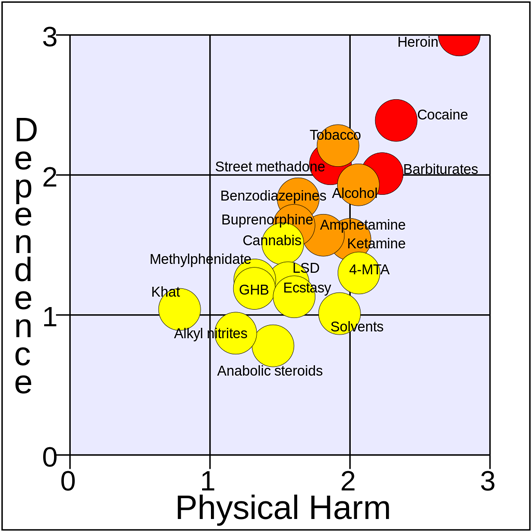Cocaine, chemically known as benzoylmethylecgonine, is a powerful and addictive stimulant, that directly affects the brain. Cocaine abuse can cause severe, long-term side effects.
Common street names are: coke, blow, snow, crack, dust, line, powder, gold dust, flake, etc.
What Exactly Is Cocaine?
A cocaine alkaloid was first extracted from the leaves of the South American coca bush during the mid 19th century by Friedrich Gaedcke. He named this alkaloid “erythroxyline”, but a few years later it became synthesized by Richard Willstätter, who then assigned it the name cocaine; the meaning comes from “coca” and the alkaloid suffix “-ine.”
Powdered cocaine is snorted (inhaled through the nose), while the crystal rock form of cocaine (AKA crack or freebase) is smoked. It is also possible to inject the liquid form into your veins, giving off a more powerful but short-lived high. Throughout the late 1800s and early 1900s, cocaine was popularly used as a stimulant and even to treat illnesses; however, due to reports of death, addiction, erratic behavior, and psychological issues, the drug became a banned substance.
Main Effects/Side Effects
Cocaine directly affects the brain and central nervous system, increasing the levels of dopamine produced. This normally causes feelings of “false” intense happiness, energy boosts, a separation from reality, and alertness. Aside from the intense mental effects, physical symptoms may include: fast heart rate, sweating, large pupils, and high blood pressure. This powerful stimulant is also known to sometimes cause violent behavior and induce tremors, vertigo, muscle spasms, paranoia, and anxiety. Long-term mental effects are are virtually guaranteed with frequent, ongoing cocaine use; these can range anywhere from depression to psychosis.
The effects of Cocaine normally depend on how much is taken at a time, and since the euphoric feelings only last briefly, this can cause repeated daily use, which in turn becomes dependence and abuse. Cocaine abuse can produce many severe long-term psychical side effects such as: risk of stroke, myocardial infarction, lung problems in those who smoke crack, blood infections, and sudden cardiac or respiratory death.
It’s useful to see where Cocaine lies on the diagram below, which shows a comparison of the perceived harm for various psychoactive drugs:

Cocaine Test Kits
To test whether or not a substance is likely cocaine, we recommend the Cocaine Test Kit. To get an idea about the purity of a cocaine sample, please see our Cocaine Purity Test Kit, and to determine cutting agents in cocaine please use our Cocaine Cuts Test Kit.


